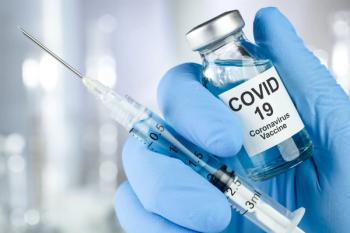
CDC Clarifies New COVID-19 Isolation Protocol, Outlines Efforts to Protect Children
CDC officials clarified the agency's new isolation recommendations for individuals infected with COVID-19 and provided updates on its efforts to reduce pediatric cases among those too young to receive vaccines.
In the wake of skyrocketing COVID-19 cases across the country and confusion regarding a controversial new
In what was the first direct press call with reporters in months, CDC Director Rochelle Walensky, MD, MPH, came under scrutiny for the agency’s poor communication of late and vowed to increase transparency in the future.
“We're in an unprecedented time with the speed of Omicron cases rising and we are working really hard to get information to the American public and balancing that with the reality that we're all living with,” Walensky said. “Scientists across CDC have worked every day to stay current in our recommendations, incorporating the latest science into work and partnering with state and local public health to provide recommendations that are most feasible and can be implemented in communities across the country.”
In late
The update was based on data showing most transmission occurs 1 to 2 days prior to symptom onset and 2 to 3 days afterwards. Although data are based in part on research conducted on other variants, officials noted it will still be weeks until detailed data on Omicron—like that reported for other variants—become available.
The previously recommended 10-day isolation period also put a strain on a number of businesses and health care systems as more and more individuals succumbed to the transmissible variant and were thus prohibited from working for 10 days. The officials stressed that unlike prior waves in the pandemic, the current issue facing the health care system is not a shortage of beds, but a shortage of staff.
Importantly, the agency also distinguished its definitions of isolation versus quarantine, noting “you quarantine when you might have been exposed to the virus and may or may not have been infected,” and “you isolate when you are sick or when you have been infected with the virus, even if you don’t have symptoms.”
Following last month's announcement of the halved isolation period, some experts publicly questioned why the guidance did not recommend a negative test after the 5 days of isolation to better justify its ending.
“The significance of a negative antigen test late in the course of illness, after you've become positive, it's unclear what that means,” said Henry Walke, MD, MPH, the co-lead of the expanding testing and diagnostic work group for the COVID-19 response, during the call. “A negative antigen test doesn't necessarily mean that there's the absence of a virus. Regardless of the test result, wearing a well-fitting mask after those 5 days of isolation is still recommended.”
Polymerase-chain reaction (PCR) tests have been described as the gold standard for COVID-19 because they can detect even small amounts of the virus in the nostrils. But individuals who were infected with COVID-19 and may not still be contagious could test positive for
Conceiving of, implementing, and clearly explaining new guidance based on fluid information and data has posed a challenge for the agency. “This is hard and I am committed to continue to improve as we learn more about the science and to communicate that with all of you,” Walensky said.
During the call, Walensky, along with Walke and Greta Massetti, PhD, principle deputy incident manager for the CDC’s COVID-19 response, also stressed the importance of keeping schools open and protecting children under the age of 5 who are not yet eligible for a COVID-19 vaccine.
This includes surrounding these children with vaccinated adults and peers, and while in school, wearing masks, increasing ventilation, and testing, Walensky said. However, vaccination remains the best tool to protect children from COVID-19.
The announcements come after new data detailed increased rates of hospitalizations in children throughout the United States. For those under the age of 5, hospitalization rates stand at over 4 in 100,000 compared with 1 in 100,000 for those aged between 5 and 17, the Associated Press
“While children still have the lowest rate of hospitalization of any group, pediatric hospitalizations are at the highest rates compared to any prior point in the pandemic,” Walensky said. This could be due to a myriad of factors, including more cases of COVID-19 in the country overall and increased rates of routine screening.
Compounding these stark figures are new
Newsletter
Stay ahead of policy, cost, and value—subscribe to AJMC for expert insights at the intersection of clinical care and health economics.









































